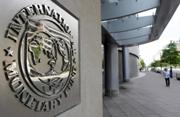8 July 2010
Asia is expected to grow by higher-than-expected rates but ‘downside risks’ have intensified in the region following financial turmoil in the eurozone area, the IMF warned on Thursday.
The Chinese economy should expand by 10.5 percent following strong rebound in exports and resilient domestic demand, the fund said, revising its April forecast of 10.0 percent.
India’s growth this year was revised higher to 9.4 percent from 8.8 percent previously as robust corporate profits and favourable financing conditions fuel investment.
The expected rapid economic expansion of the world’s two most populous nations was in line with higher growth forecast for the region as a whole.
Gross domestic product growth forecast for Asia in 2010 was revised to 7.5 percent from 7.0 percent in April.
For 2011, when stimulus programs are expected to be withdrawn in several countries, Asia’s GDP growth is expected to settle to “a more moderate but also more sustainable rate” of 6.8 percent, the IMF said in a report.
It said that China’s growth could slow to about 9.6 percent in 2011, when further measures were taken to slow credit growth and maintain financial stability. India’s growth is expected to settle to 8.4 percent next year.
In Japan, growth was now expected to reach 2.4 percent in 2010, due mainly to stronger-than-expected exports during the first half of the year, before easing to about 1.8 percent in 2011 as fiscal stimulus gradually tapered off.
The five key Southeast Asian economies of Indonesia, Malaysia, the Philippines, Thailand and Vietnam were expected to grow by an average 6.4 percent in 2010 and 5.5 percent next year.
Though Asia has only limited direct financial linkages to the most vulnerable euro area economies, the IMF warned that a stall in the European recovery that spilled over to global growth would affect Asia through both trade and financial channels.
“Many Asian economies (especially the newly industrialized economies and the ASEAN economies) are highly dependent on external demand, and their export exposure to Europe is at least as large as their export exposure to the United States,” the report said.
However, in the event of “external demand shocks,” large economies such as China, India and Indonesia could provide a cushion to growth, it said.
The report pointed out that significant contagion effects from a Europe-wide credit problem could hit bank funding and corporate financing, especially in those regional economies more dependent on foreign currency financing. But the IMF said that in the event of such contagion, Asian central banks could swiftly redeploy tested instruments, such as a US dollar liquidity swap facility, to overcome market seizures.
“Many regional economies also have room for further policy maneuver and could delay the planned withdrawal of monetary and fiscal stimulus in order to mitigate adverse spillovers to the real economy,” it said.
Copyright AFP (Agence France-Presse), 2010




